Q
What's the fuel consumption of the Mazda CX-5?
The fuel economy of the Mazda CX-5 in Malaysia varies depending on the specific trim and drivetrain. The 2.0-liter naturally aspirated Skyactiv-G engine returns around 7.8L/100km in city driving, dropping to 6.2L/100km on the highway. The 2.5-liter version drinks roughly 10% more, while models equipped with the i-Activ AWD system add about 0.5L/100km due to the extra power distribution. Real-world figures, however, depend heavily on driving style and road conditions – aggressive acceleration, for instance, can bump consumption up by 15-20%.
It's worth noting Mazda's Skyactiv tech works wonders for efficiency, using high compression ratios and optimized powertrains to squeeze every drop. Malaysian buyers should check the ASEAN NCAP fuel economy labels, and keeping up with regular maintenance like fresh air filters and using the recommended oil viscosity (0W-20 is what Mazda suggests) will help maintain those optimal figures. All told, the CX-5 strikes a pretty solid balance between engaging handling and fuel efficiency compared to other Japanese SUVs in its class.
Special Disclaimer: This content is published by users and does not represent the views or position of PCauto.
Related Q&A
Q
Is the 2024 Mazda CX-5 petrol or diesel better?
The 2024 Mazda CX-5 is available in both gasoline and diesel variants in the Malaysian market. The optimal choice depends primarily on your driving needs. The gasoline model features 2.0L and 2.5L Skyactiv-G naturally aspirated engines, delivering smooth power output and lower maintenance costs. It excels for urban commuting and daily family use, particularly benefiting drivers who frequently make short trips. The diesel variant features a 2.2L Skyactiv-D turbocharged engine, delivering greater torque and superior fuel efficiency. It excels for long-distance driving or frequent cargo transport, though diesel vehicles typically carry higher purchase and maintenance costs. Given Malaysia's relatively low diesel prices, the diesel model may prove more economical over extended use for high-mileage drivers. Both models come standard with Mazda's i-Activsense safety suite, and their interior quality and handling performance are consistent. Note that diesel vehicles demand higher fuel quality standards; regular maintenance at authorized service centers is recommended. If you prioritize a quiet, comfortable driving experience, the gasoline model is preferable. For those focused on fuel efficiency and responsive power delivery, the diesel variant is worth considering.
Q
How many cc is the 2024 Mazda CX-5?
The 2024 Mazda CX-5 hits the Malaysian market with two petrol engine choices: the 2.0-litre and 2.5-litre Skyactiv-G naturally aspirated units. The 2.0L checks in at 1998cc, while the 2.5L comes in at 2488cc. Both powerplants leverage Mazda's clever Skyactiv tech, which strikes a nice balance between fuel efficiency and power delivery—ideal for both Malaysian city commutes and longer highway hauls.
Now, naturally aspirated engines are known for their linear power delivery at higher revs and generally lower maintenance costs, though they might not quite match turbocharged engines for low-end torque. But Mazda's done a solid job with the tuning here, so the CX-5 still feels plenty responsive in day-to-day driving.
For Malaysian buyers, the 2.0-litre variant makes a lot of sense if you're mostly zipping around the city. On the other hand, if you often carry extra passengers, load up the boot, or just want that little bit more grunt when you need it, the 2.5-litre is the way to go. Factor in the CX-5's reputation for sharp handling and that eye-catching Kodo design language, and it's definitely a strong contender in the mid-size SUV segment.
Q
How many miles can a 2024 Mazda CX-5 go on a full tank of gas?
The 2024 Mazda CX-5's range depends on its fuel tank capacity and real-world fuel efficiency. Here in Malaysia, the CX-5 typically comes with a 58-liter fuel tank. Official figures peg its combined fuel consumption at around 7.2 to 7.8 liters per 100 kilometers, so you're looking at a projected range of roughly 740 to 800 kilometers on a full tank. Of course, your actual mileage will vary based on driving habits, road conditions, and how much you're carrying.
Under the hood, the CX-5's Skyactiv-G engine and i-Stop idle-stop tech work together to keep fuel use in check. Keep a steady pace on the highway, and you might even stretch that range a bit further. For Malaysian drivers, though, our hot weather and stop-start city traffic could nudge fuel consumption up slightly. A little regular maintenance and keeping an eye on tire pressure should help you get the best out of it.
In the same segment, rivals like the Honda CR-V or Toyota RAV4 offer pretty similar range figures. At the end of the day, it really comes down to personal preference and what you need from your SUV.
Q
Which 2024 Mazda CX-5 has the best gas mileage?
The 2024 Mazda CX-5 offers multiple powertrain options in the Malaysian market, with the front-wheel-drive variant featuring the 2.0-liter Skyactiv-G naturally aspirated engine delivering the best fuel economy. Official data indicates a combined fuel consumption of approximately 6.5-6.8 liters per 100 kilometers, striking a balance suitable for both daily urban commuting and long-distance driving. This engine pairs with an optimized 6-speed automatic transmission, leveraging Mazda's exclusive Skyactiv technology to achieve efficient combustion and low friction losses while preserving the brand's signature driving pleasure. For further fuel efficiency gains, maintain proper tire pressure, avoid aggressive acceleration and braking, and use the air conditioning system judiciously. It's worth noting that the hybrid variant is not currently available in Malaysia. However, the conventional gasoline-powered CX-5 still delivers competitive fuel economy among its SUV peers, particularly offering more stable consumption in congested traffic compared to some turbocharged models. For Malaysian buyers, opting for the front-wheel-drive (FWD) version not only reduces fuel costs but also lowers the initial purchase price, as FWD models are typically more affordable than their all wheel-drive (AWD) counterparts.
Q
How many litres does a 2024 Mazda CX-5 use per 100 km?
The 2024 Mazda CX-5's fuel efficiency in the Malaysian market varies depending on model configuration and driving conditions. According to official data, its combined fuel consumption ranges approximately between 6.5 and 7.5 liters per 100 kilometers. with specific figures depending on the engine type and drivetrain configuration. For instance, the front-wheel-drive version with a 2.0-liter naturally aspirated engine tends to be more fuel-efficient, while models equipped with a 2.5-liter engine or all-wheel drive may exhibit slightly higher consumption. Driving conditions in Malaysia, such as urban congestion or highway cruising, also influence real-world fuel economy. Owners are advised to assess their vehicle's performance based on personal driving habits and road conditions. Additionally, the Mazda CX-5 incorporates Skyactiv technology, optimizing fuel efficiency and power output while maintaining an excellent driving experience. This makes it a solid choice for Malaysian consumers seeking a balance between fuel economy and performance. Routine maintenance and details like tire pressure also affect fuel consumption, and regular servicing helps keep the vehicle in optimal condition.
Q
How big is the fuel tank on a 2024 Mazda CX-5?
The 2024 Mazda CX-5 comes with a 58-liter fuel tank, a design that strikes a good balance between meeting daily commuting needs and longer road trips, all while keeping fuel efficiency in mind. For Malaysian drivers, this 58-liter tank typically translates to a range of around 600 to 700 kilometers in urban settings, though your actual mileage will vary depending on driving style and traffic conditions. Hit the highway, and you can expect to stretch that range even further.
A big part of that efficiency story is Mazda's Skyactiv technology, which optimizes fuel burn to help you go that extra mile. Good news too for local owners: Malaysia's fuel quality plays nice with the CX-5's engine. We recommend sticking with RON 95 or higher octane fuel to ensure the engine performs at its peak. If you're someone who racks up the highway klicks regularly, a quick periodic check of the fuel tank and system is a smart move to keep everything running smoothly.
In the Malaysian market, the CX-5 has built a solid rep for reliability and driving enjoyment. Its 58-liter fuel tank sits comfortably in the upper-middle range for SUVs in its class, making it more than capable of handling the demands of most drivers.
Q
Where is the 2024 CX-5 made?
The 2024 Mazda CX-5 is primarily built at the Hofu plant in Hiroshima, Japan – one of Mazda's core global manufacturing hubs, renowned for its top-tier craftsmanship and strict quality control. Now, for the Malaysian market, some CX-5 variants might roll out of the Rayong, Thailand facility. That factory handles supply for right-hand-drive markets across Southeast Asia, ensuring the vehicles are properly localized and delivered efficiently.
Malaysian buyers can actually check the origin using the VIN (Vehicle Identification Number): a "J" at the start means it's from Japan, while an "M" points to Thailand. Importantly, both production sites stick to Mazda's unified quality benchmarks. However, the Thai-built models might have subtle tweaks, maybe in rear-seat amenities or suspension tuning, to better suit typical Southeast Asian road conditions.
It's worth noting Mazda's been pushing a "single model, multiple production locations" strategy lately. This helps optimize costs and allows quicker responses to regional demands. For instance, the CX-5 is also assembled in places like Russia and Mexico. But for Southeast Asian specs, Japan and Thailand remain the main sources.
As always, I'd recommend chatting with your local Mazda dealer before buying. They can confirm the specific production batch and trim details of the CX-5 you're eyeing, making sure you get the exact setup that fits your needs best.
Q
Is there a recall on Mazda CX-5 2024?
As of now, Mazda Malaysia hasn't issued any official recall notices for the 2024 CX-5. Owners can head to the "Recall Check" section on Mazda Malaysia's official website and punch in their Vehicle Identification Number (VIN) to confirm the latest status. If there are any safety-related updates down the line, Mazda typically gets in touch with owners through their registered dealerships to arrange free inspections and repairs. We recommend Malaysian CX-5 owners keep a regular eye on their vehicle's condition and stay tuned to official channels—think the Road Transport Department (JPJ) or announcements from authorized Mazda service centers. Recalls are almost always about safety first, like potential part glitches or software tweaks, and they don't reflect poorly on the overall quality of the vehicle. Proactively responding to a recall ensures your ride stays up to the highest safety standards. The CX-5 remains a popular SUV choice, and its safety tech like the i-Activsense system has always earned high marks. Owners should also consider regular preventive check-ups at authorized service centers to keep their CX-5 performing at its best.
Q
What type of oil does a 2024 Mazda CX-5 take?
For the 2024 Mazda CX-5 in Malaysia, Mazda recommends using 0W-20 fully synthetic engine oil that meets their factory specifications. This low-viscosity oil does a solid job boosting fuel efficiency and cutting down on engine wear during cold starts – perfect for daily driving in our tropical climate. If you're pushing the car hard with spirited driving or it's got some serious miles on the clock, stepping up to 5W-30 might be a good call for better high-temperature protection. But honestly, your best bet is to stick to what the owner's manual or Mazda's authorized service centers suggest first.
One thing to keep in mind: Malaysia's hot and humid conditions can really make oil break down faster. So even with fully synthetic stuff, you've gotta stay strict on oil changes – every 10,000 kilometers or 6 months, whichever comes first. When picking oil, make sure it has the latest certifications like API SP/GF-6 or ACEA C5. Those oils pack more anti-wear additives, which is crucial for protecting all the精密 (jingmì - precise) moving parts in the Skyactiv engine.
If you're mostly stuck in city traffic with a lot of stop-and-go, it's worth looking for oil with good anti-carbon buildup properties. That helps keep the engine clean inside for the long haul. And hey, do yourself a favor – buy your oil through Mazda's official after-sales channels. That way, you know you're getting the real deal, formulated for Malaysia's roads and weather. Using sketchy, unbranded oils? Yeah, that could end up voiding your warranty, and nobody wants that headache.
Q
What is the fuel consumption per 100km of the Mazda CX-5 2024?
The 2024 Mazda CX-5's fuel economy in the Malaysian market varies depending on the powertrain and driving conditions. The 2.0-liter naturally aspirated engine variant returns a combined fuel consumption of approximately 6.5 to 7.2 liters per 100 kilometers, while the 2.5-liter version is slightly thirstier, coming in at around 7.4 to 8.1 liters per 100 kilometers. Real-world figures, however, can fluctuate based on factors like heavy city traffic, air-conditioning usage, and individual driving styles.
Mazda's Skyactiv technology plays a key role here, optimizing engine efficiency and incorporating lightweight materials to boost fuel economy without sacrificing that signature Mazda driving fun – a nice fit for Malaysia's diverse road conditions. For those looking to squeeze out a bit more from each tank, keeping your tires properly inflated, avoiding aggressive acceleration and hard braking, and making smart use of the stop-start system are all solid tips.
All in all, the CX-5 remains a popular SUV choice, striking a pretty good balance between fuel efficiency and performance. It's a practical pick for family drivers who want something that doesn't guzzle gas but still delivers when you need it.
Latest Q&A
Q
How to open the hood of Subaru Crosstrek?
To pop the hood on a Subaru Crosstrek, start by locate the hood release lever under the left side of the driver’s seat. Give it a good pull until you hear the hood slightly pop up. Then head around to the front of the car, stick your hand into the gap at the center of the hood’s leading edge, and find the secondary safety latch—it’s usually a small lever or button. Push or flip that latch to the side while gently lifting the hood up. The Crosstrek uses this double-latch setup to make sure the hood stays put while you’re driving, which is a solid safety move.
Here in Malaysia, with our hot and rainy weather, it’s super important to regularly check the fluid levels and components under the hood. Keep an eye on things like coolant and brake fluid especially—they’re key to keeping your ride running smoothly. If you notice the hood feels heavy or tough to lift, check the support struts to make sure they’re working right. A little lubricant on the hinges can also help if needed. And let’s not forget Subaru’s unique boxer engine layout—when you’re poking around, take note of how the hoses and wiring are routed to avoid accidentally bumping or damaging anything.
Q
What colors does Subaru Crosstrek have?
As of 2023, the Subaru Crosstrek's color palette in Malaysia typically leans into classic, practical choices. Think Crystal White Pearl, Magnetite Gray Metallic, Deep Blue Pearl, Ignition Red Crystal, and Cool Gray Khaki – shades that balance everyday dirt resistance with that outdoorsy, stylish vibe. Of course, availability can shift slightly depending on the model year or if there's a special edition in the mix.
For Malaysian buyers, picking a color isn't just about personal taste; the local climate plays a role too. Lighter hues tend to handle the heat better and hide dust, while darker tones exude a more steady presence, which can be nice for business settings.
Subaru's paint tech is worth noting here – they use eco-friendly water-based paints and anti-UV treatments, which do a solid job of keeping the color from fading. That's a big plus in Malaysia's year-round high temperature and humidity conditions.
If you're after the latest color options or any limited-edition finishes, your best bet is to hit up a Subaru authorized dealer in Malaysia. They'll have the most accurate info on current stock and any customization options. Plus, they can give you practical tips on keeping that paint looking sharp, like regular waxing to protect against acid rain and harsh sunlight.
Q
When to replace the spark plugs of Subaru Crosstrek?
The Subaru Crosstrek's spark plugs typically need changing every 60,000 kilometers or 5 years, whichever comes first. That's the standard from the factory service manual, but you might need to adjust based on your driving conditions and habits. For example, if you're doing a lot of short trips or frequent stop-starts in Malaysia's hot weather, you should check them as early as 40,000 km.
Subaru's boxer engine design puts the spark plugs in a tougher working environment, so it's best to stick with the original iridium or platinum plugs recommended by the factory. These ensure better durability and ignition performance. Keep an eye out for signs like hard starting, rough idling, increased fuel consumption, or sluggish acceleration—those could mean your plugs are wearing out and need checking.
Malaysia's humid, rainy climate can also speed up wear on ignition system components, so don't forget to regularly inspect the ignition coils and high-tension leads too. If you're a DIY enthusiast, know that changing the Crosstrek's plugs requires special tools, and their position in the boxer engine is a bit tricky. If you're not experienced, better leave it to the pros to avoid damaging the threads or ignition coils.
For daily maintenance, using a good quality fuel additive can help clean carbon deposits in the combustion chamber, which indirectly extends plug life—but it's no substitute for regular replacement.
Q
Which gasoline suits Subaru Crosstrek?
For Subaru Crosstrek owners in Malaysia, you've got two solid fuel choices: RON 95 or RON 97 unleaded petrol. The decision really comes down to your budget and how you drive. RON 95 is the practical pick – it's more wallet-friendly and totally up to the task for everyday commuting and most driving scenarios. On the flip side, RON 97 can deliver slightly more consistent combustion efficiency when you're pushing the engine hard, like during high-load situations or spirited driving.
Under the hood, the Crosstrek's FB20 boxer engine is naturally aspirated and actually pretty flexible when it comes to fuel. That said, if you want to keep carbon buildup in check, it's a good idea to opt for Euro 5 compliant fuel when you can – it's cleaner and better for the engine in the long run.
Malaysian Crosstrek drivers should also remember to regularly use the fuel additives recommended by Subaru. This is especially important for maintaining the health of the direct injection system, which can be prone to carbon deposits if you skimp on this. Another thing to note is that fuel quality can vary a bit from region to region. If you're heading out on a road trip to more remote areas, maybe consider bumping up to a higher octane fuel just to be safe, as the local petrol might not be as consistent.
Here's the key point though: unlike some high-performance cars that demand premium fuel, the Crosstrek's engine isn't tuned to require RON 97. So, don't feel pressured to shell out extra cash for higher octane than you need – it's just unnecessary expense. At the end of the day, keeping up with regular maintenance and sticking to reputable petrol stations are the best ways to keep your Crosstrek's engine running smoothly for years to come.
Q
How many miles can a Subaru Crosstrek run?
The Subaru Crosstrek, that compact SUV known for its rugged durability and full-time all-wheel drive system, can typically clock up 200,000 to 300,000 kilometers – and often more – with proper care. Of course, your actual mileage will depend on your driving style, how regularly you service it, and let's not forget Malaysia's unique road conditions and climate. That hot, humid weather can take a toll on rubber components and electronics, so I'd recommend keeping up with coolant changes and giving your chassis parts a regular once-over.
Subaru's boxer engine is great for that low center of gravity, but it does demand stricter oil change schedules. Stick to fully synthetic oil and change it every 5,000 kilometers or 6 months, whichever comes first. For Malaysian Crosstrek owners, those rainy seasons mean paying extra attention to your brake system and making sure those sunroof drain holes stay clear – you don't want water pooling up where it shouldn't.
The real key to making your Crosstrek last? Follow the manufacturer's service manual to the letter, use genuine or approved parts, and don't ignore those little niggles like strange noises or warning lights – fix 'em early. In the competitive compact SUV segment, the Crosstrek holds its value pretty well, sitting comfortably in the upper-middle range. The used car market really appreciates a vehicle with a complete service history, so hang onto all those repair receipts – they'll definitely help boost your resale price down the line.
View MoreRelated News
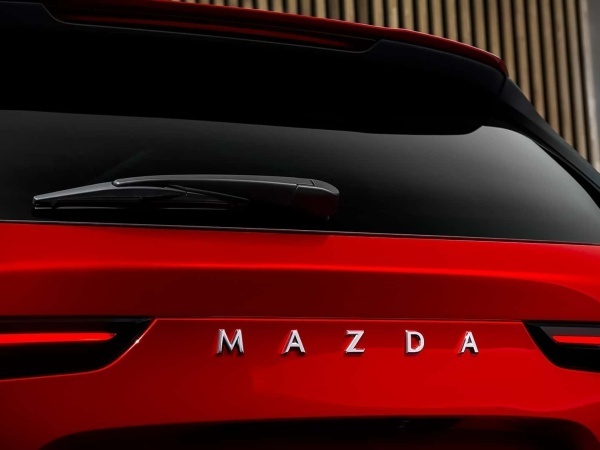
The third-generation Mazda CX-5 debuts in Europe, equipped with the largest central control screen in Mazda's history
MichaelJul 11, 2025
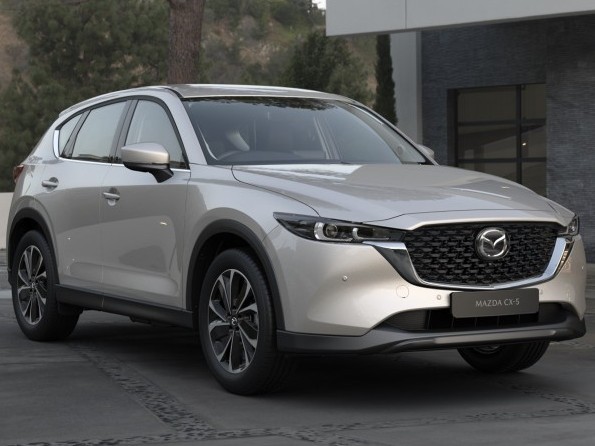
Stunning Looks, Premium Feels: Mazda CX-5's Dual Charm in Detail
AshleyApr 23, 2025
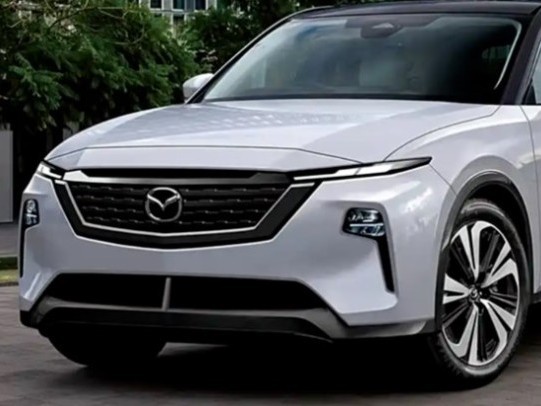
Mazda CX-5 showcased at Thailand Motor Expo 2024, new generation could be released at the Tokyo Auto Show next year
Kevin WongDec 4, 2024
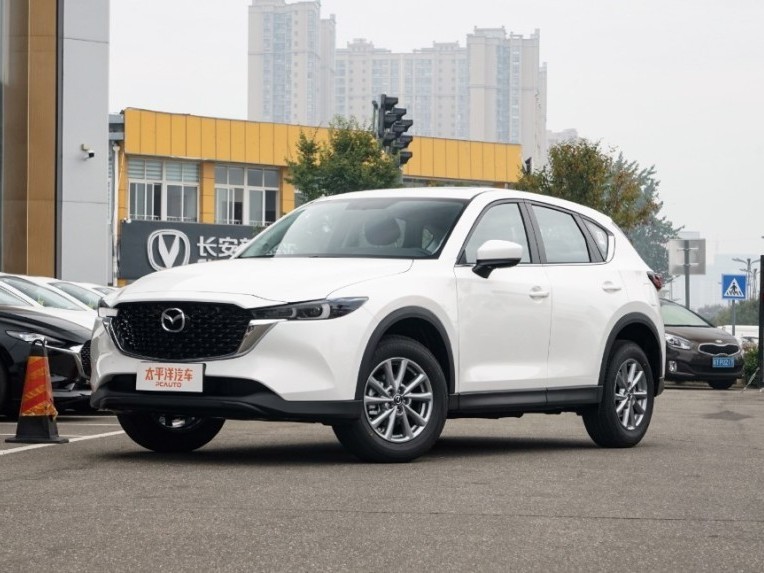
The third generation Mazda CX-5 is expected to debut in 2025! It may be equipped with self-developed hybrid technology!
RobertNov 25, 2024
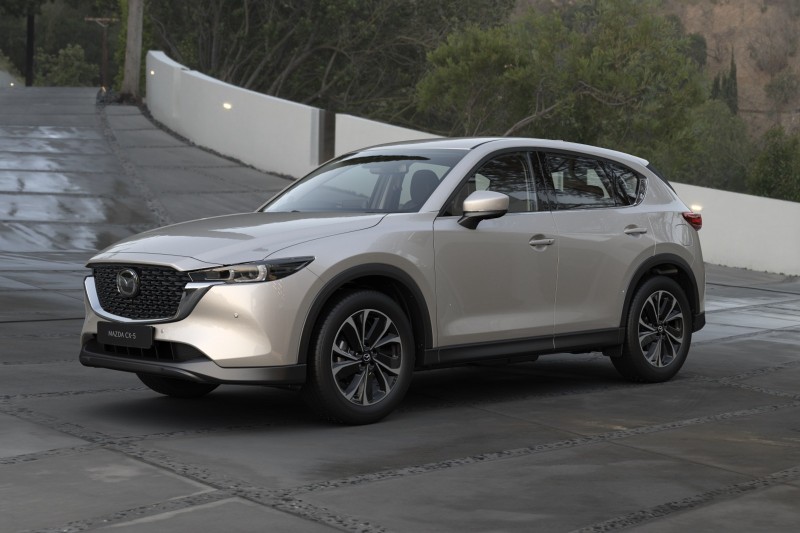
Analysis of the advantages and disadvantages of Mazda CX-5, a SUV that people both love and hate?
LienSep 26, 2024
View More











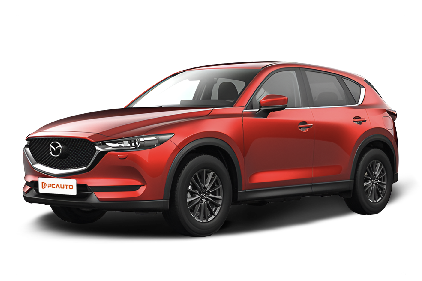





Pros
Cons